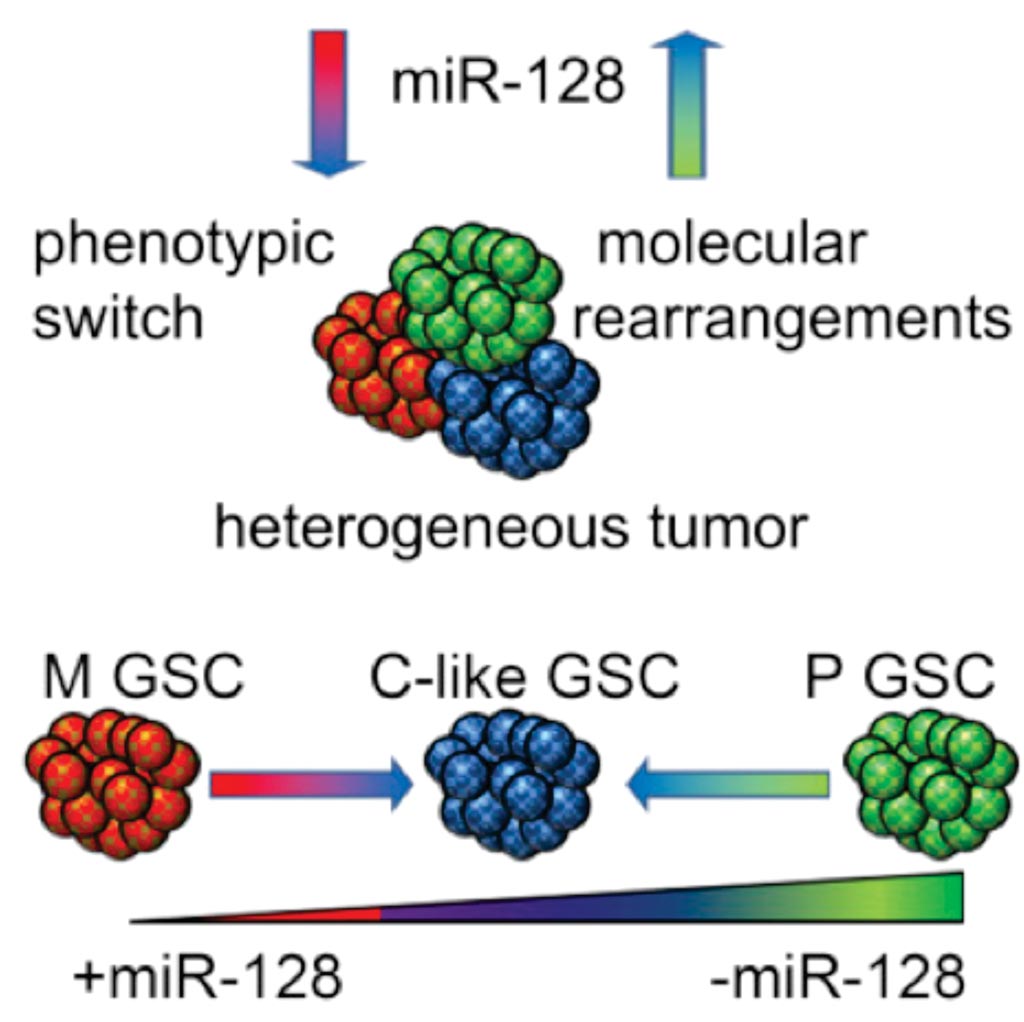Specific MicroRNA Identifies Glioblastoma Subtypes
By LabMedica International staff writers
Posted on 26 Jul 2017
Glioblastoma multiforme (GBM), an extremely aggressive brain cancer, is a very complex disease. It is characterized by a fast-growing tumor in the brain composed of many subpopulations of cells, including glioblastoma stem cells, which play a crucial role in glioblastoma initiation, expansion and therapy-resistance.Posted on 26 Jul 2017
Glioblastoma presents unique challenges for treatment because of its heterogeneity, aggressive biological behavior, and diffusive growth. The transcriptomic classification divides primary GBM tumors into different subtypes, including classical (C), mesenchymal (M), and proneural (P). A specific microRNA has been examined by to help identify glioblastoma subtypes and to determine if altering the microRNA's presence in glioblastoma cells could change the tumor's subtype.

Image: A diagram of microRNA-mediated dynamic bidirectional shift between the subclasses of glioblastoma stem-like cells (Photo courtesy of Brigham and Women\'s Hospital).
Scientists at the Brigham and Women's Hospital, Harvard Medical School (Boston, MA, USA) identified different glioblastoma subtypes is by looking at the specific microRNA expressed in the patient derived GBM stem cells. In several types of cancer cells, including glioblastoma cells, microRNA expression is not regulated properly. The team characterized the expression of the subtype-enriched microRNA-128 (miR-128) in transcriptionally and phenotypically diverse subpopulations of patient-derived glioblastoma stem-like cells.
The team identified the "proneural" subtype as having high levels of miR-128 compared to the mesenchymal tumors, which had significantly lower levels of this particular microRNA. Interestingly, they also found that if they raised or lowered the levels of miR-128, they could induce one subtype of tumor to transition into a new subtype. The team concluded that their results provide a comprehensive overview of the dynamic spectrum of cellular subpopulations in glioblastoma, which is critical for establishing more faithful models and for advancing therapeutic strategies that will be capable of overcoming the complexity of this disease, which is currently one of the leading causes of treatment failure in glioblastoma patients.
Agnieszka M. Bronisz, PhD, an Assistant Professor of Neurosurgery and the corresponding author of the study said, “Mesenchymal glioblastoma is extremely aggressive, highly heterogeneous and has the poorest chance of survival for patients. By altering the level of miR-128 in both mesenchymal and proneural tumors, we can shift the tumor into a more hybrid type, similar to the "classical" subtype which is more homogenous and easier to treat.” The study was published on June 6, 2017, in the journal Cell Reports.
Related Links:
Brigham and Women's Hospital













